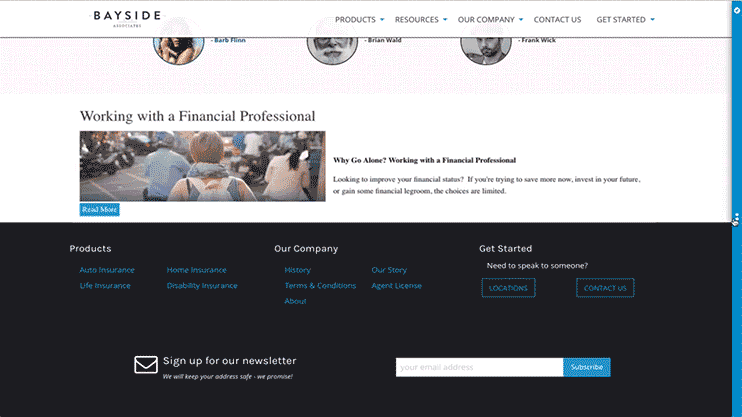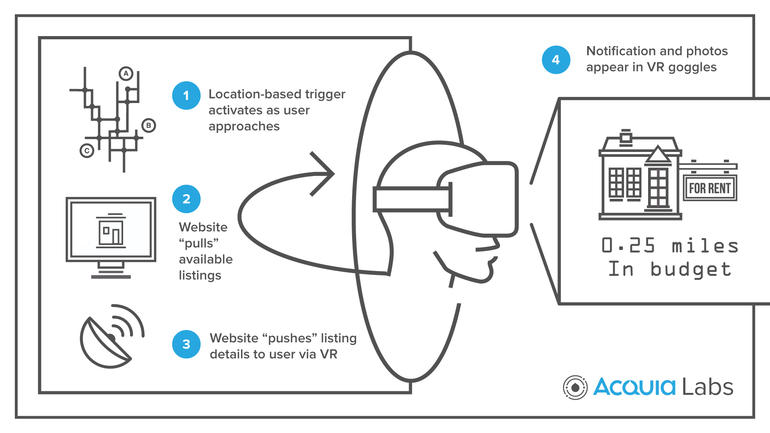Dries Buytaert Discusses Acquia & the Future of WCM
Acquia, a Drupal-based open source content management system provider, has consistently been in the news lately. Therefore, we have reached out to Dries Buytaert, Drupal founder and project lead, Co-founder and CTO at Acquia, to inquire about their announcement of being positioned in the Leaders' Quadrant of the 2016 Gartner’s Magic Quadrant for Web Content Management, the new capabilities for Acquia Lift, their personalization platform, and last but not least, what launching a research and development unit to prepare for new platforms, Acquia Lab, means for the industry.
Dries, as expected, is very proud of Acquia not only because the company was positioned as a Leader for the 3rd consecutive time in Gartner's Magic Quadrant for Web Content Management report, but also because they narrowed the gap on Sitecore and Adobe on the leaderboard. It is also important to note that Acquia is the only open source company included among the six leaders. When we asked Dries what the key drivers are behind their unprecedented growth, he emphasized two primary reasons: their technology and their business model.
From the technology perspective; having a combination of open source and cloud enables Acquia’s customers to take advantage of the high speed of development, scalability, and cost reduction, according to Dries. From the business model perspective; the company has always believed that open source combined with the cloud, offered through a subscription model rather than a perpetual license, would be a very compelling solution for the market. During the interview, Dries, once again, emphasized the success of this business model and explained why it is one of the main drivers behind their rapid growth: "Instead of selling licenses where the customers pay a lot of money upfront, we prefer to provide a subscription business model as we think, it is much more customer friendly, and our main focus on customers’ success."
Acquia Lift
Lift is Acquia’s SaaS solution for creating personalized and contextual digital experiences. The company launched the product in 2014 in an effort to equipt site owners with powerful website testing and content targeting tools to optimize content for each visitor. According to Dries, since then, the company has seen a lot of opportunities to enhance Lift. To do so, they took a few steps back and re-imagined. As a result, last month Acquia announced some powerful new capabilities for Acquia Lift.
The new features:
-
A new card-based, intuitive UI with drag-and-drop content targeting
-
Merging anonymous and known visitor profiles
-
Enterprise CMS integration and content syndication from any source
-
Turnkey integration with Drupal 7 and Drupal 8
-
Real-time, adaptive segmentation
-
Behavioral targeting and A/B testing
When we asked Dries what challenges Acquia aimed to address with these new capabilities, he told us that they aimed to optimize the platform for developers, marketers, and merchandisers.
With the new changes, the platform provides a sidebar which slides out from the edge of the page when a user needs it. The sidebar enables users to drag and drop content into the page and get a preview in real-time to see how the content would look. It’s also possible to switch between different user segments to visualize how the look would change for different users by simply selecting from the sidebar. Here’s a glance of the sidebar:

After all, the platform is a personalization tool. Therefore, the company added new capabilities to enable users to segment and target audiences in real time based on their behaviors and actions, by tapping into machine learning technology. Another pain point in terms of personalization that the newly updated Acquia Lift platform addresses, is the fact that content should be displayed in any number of ways. With the new capabilities, content in Acquia Lift can be selected for the right display format in addition to the right audience. The platform also allows users to reuse their existing content and configurations already set up for their Drupal site.
For developers, Dries said that they focused on a lot of integration to make the platform much more flexible and easier to integrate with other technologies. In this regard, the latest version of Acquia Lift can be installed on any Drupal or non-Drupal website through a simple JavaScript tag, meaning whether users are working with a legacy system, a JavaScript application, a decoupled Drupal build with custom front end, or a non-Drupal commerce site, they can be integrated with Acquia Lift as it became a multi-platform solution. However, Dries still emphasizes that Acquia is a Drupal expert and Lift is the best personalization solution for Drupal, so he sees this level of expertise as one of the key differentiators of the product in the market.
Acquia Lab
Acquia is launching a research and development unit called Acquia Lab to prepare for new platforms. Acquia Lab will be led by Dries Buytaert, and according to him, the idea behind launching Acquia Lab is moving from consumption of content to interacting with content. During the interview, we asked him to elaborate on that. He said: “We are living in an interesting time as there are a lot of relatively new technologies such as chatbots, voice-activated assistants, machine learning, personalization tools, beacons, and IoT devices that we have started to adopt.” As a result, digital experiences and business models are changing. Because of all these changes, Dries said that their customers are interested to see how they can use these technologies to reinvent their own businesses and digital experiences so with Acquia Lab, the company expects to work with their customers as partners to bring some of these technologies to the market through integration with its products.

To me, this initiative, once again, demonstrates how carefully Acquia listens to its community. As you may recall that of the strengths that Gartner pointed out in its Magic Quadrant for WCM report, it is that “Acquia has been effective at cultivating and capitalizing on the popularity of Drupal and its community, while ensuring its resilience for use in enterprise-class use cases.”
Acquia's customer base includes NBC, Warner Music Group, BBC, Intuit's Mint, Red Hat, Cisco, and The Weather Channel. Drupal runs one out of 50 websites and has an active community of 35,000 developers.
What’s The Next Platform for Content?
As an answer to this question, Dries believes that we are moving beyond the traditional web pages to channels. Therefore, organizations should change the way they interact with customers by going across all channels their audiences uses. From the content management systems point of view, he thinks that CMSs are becoming increasingly more headless or decoupled. He also sees micro-services as an emerging trend. Regardless of the kind of CMS, Dries emphasizes the importance of connecting and orchestrating all the systems such as CMS, CRM, marketing automation and e-commerce, in harmony.
To me, one thing is certain, that CMS has to go beyond being only a content creation platform to be more of a platform that offers deep personalization, machine learning, content optimization across channels/devices, and segmentation in real time based on audience’s behaviors and actions. Therefore, it’ll be exciting to see how CMS vendors will enhance their platforms and, more importantly, how businesses will take advantage of those platforms to deliver a holistic digital experience to consumers.

Venus Tamturk
Venus is the Media Reporter for CMS-Connected, with one of her tasks to write thorough articles by creating the most up-to-date and engaging content using B2B digital marketing. She enjoys increasing brand equity and conversion through the strategic use of social media channels and integrated media marketing plans.